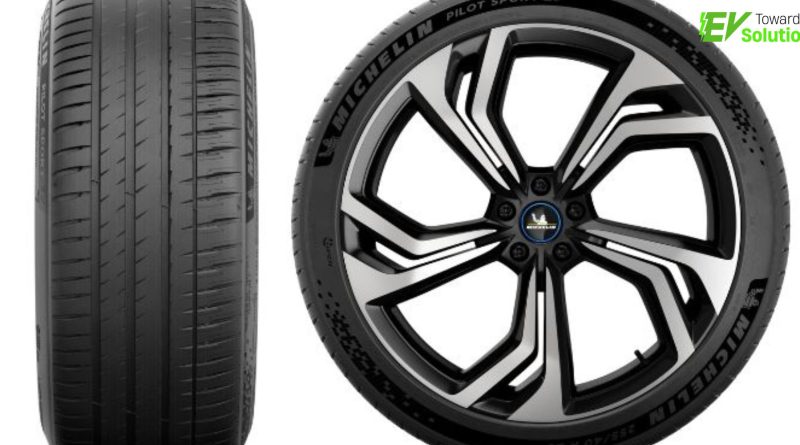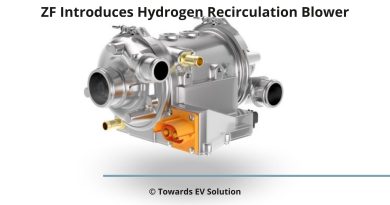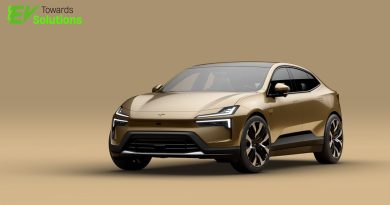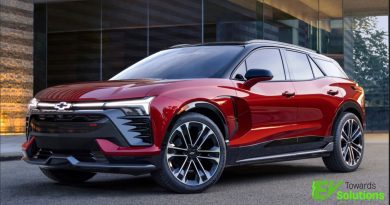Fuel-efficient Tyres: A Suitable Choice for Electric Vehicles
The idea of developing fuel-efficient tires for EVs is receiving attention for their efforts. TVS Srichakra, also known for its Eurogrip brand, is all set to introduce a new generation of fuel-efficient tires specifically designed for electric vehicles (EVs). The company has set a target to reduce tire rolling resistance by an additional 10% over the next 6 to 12 months.
The Chief Technology Officer at TVS Srichakra, Sivaramakrishnan V, stated that tires will offer increased mileage and it will increase the low rolling resistance tire of a bike that typically runs 100 km and can now cover 110 km. The Ministry of Heavy Industries had reduced the Electric Vehicle (EV) subsidy per unit to 15%. The attractive point for the EVs was the GST on chargers/ charging stations was reduced from 12% to 5%.
India Electric Vehicle Market Revenue
As per the Precedence Research’s detailed report on the india electric vehicle market revenue was valued at USD 11.36 billion in 2024 and is predicted to increase from USD 18.79 billion in 2025 to approximately USD 1,053.10 billion by 2034. The India EV sector is representing a noteworthy CAGR of 57.3% between 2024 and 2034.
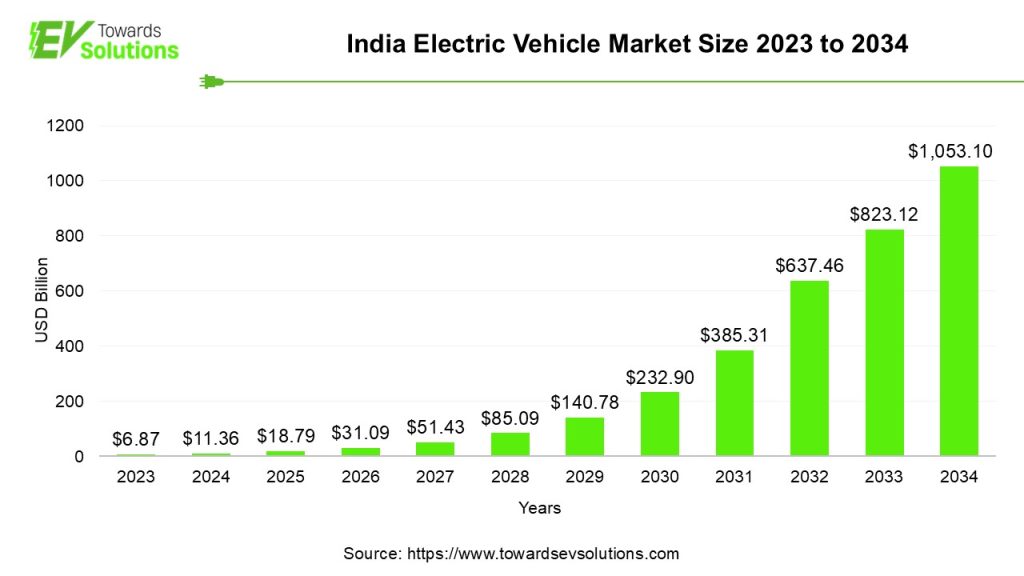
Electric Vehicle Sales in India in 2023, by State
| State | Unit Union Territory Unit |
| Maharashtra | 320,189 Dadra & Nagar Haveli 318 |
| Rajasthan | 182,376 |
| Gujarat | 149,066 |
| Goa | 13,735 |
| Tamil Nadu | 8,089 |
| Delhi | 181,037 |
| Madhya Pradesh
Uttarakhand |
442,858
30,195 |
| Bihar | 167,136 |
| Odisha | 66,336 |
| West Bengal | 57,195 |
| Jharkhand | 36,336 |
TVS Srichakra has a current product portfolio of 250 tire models, 12 of which lean toward the EV segment. In the last three years, the company introduced 45 new products that are available in premium and super-premium categories. The Executive Vice President of Sales and Marketing, P Madhavan, stated that new recently launched products had contributed to 35% of the company’s revenue. The company has a high reputation for exporting between 7% and 8% of its total production to 90 countries worldwide.
Toyota Innova Hycross and Maruti Suzuki Grand Vitara Hybrid attract consumers with their self-charging technology, and this acts as a bridge between the internal combustion engine (ICE) and EV technologies, showcasing a shift towards Global preferences. The aim of implementing 30% EVs by 2030 in the Indian market is a challenge with obstacles like battery prices and not-so-consistent subsidies. In the year 2024, the company was able to report standalone revenues of Rs 2,754 crore from its marketing.
A recent report from Precedence Research reveals that India’s EV production capacity is projected to grow by 38% in 2024, reflecting the growing funding and investments by key market players.
Faster adoption and manufacturing of hybrid vehicles and electric vehicles in India (FAME India) has increased India’s EV market and innovations and investments in the EV segment. The company operates two manufacturing plants in India—one in Madurai, Tamil Nadu, and another in Rudrapur, Uttarakhand. These facilities, with the capacity to produce up to 3 million tires per month, are the major factor in the company’s strength in its production capabilities for the growing EV market.
With a Master of Science in Statistics and over two years of expertise in the market research industry, Rushikesh brings a wealth of knowledge to the world of electric vehicle (EV) news. His passion for the automotive sector, combined with his statistical expertise, allows him to analyze trends, consumer behavior, and emerging technologies with precision. Rushikesh’s ability to dive deep into the numbers, yet communicate them in a reader-friendly manner, makes him a key voice in the fast-evolving EV industry.
Having spent his academic and professional career immersed in data-driven analysis, Rushikesh leverages his strong statistical foundation to offer insights that are both thorough and forward-thinking. His keen interest in the automotive industry, especially electric vehicles, positions him uniquely to understand not only the current landscape but also the trajectory of the sector as governments, manufacturers, and consumers increasingly lean towards sustainable transportation.

